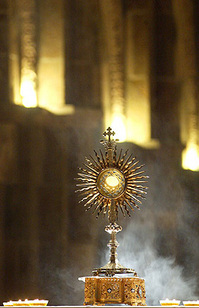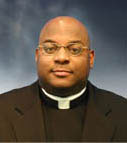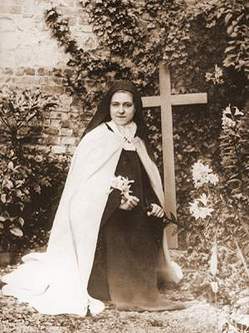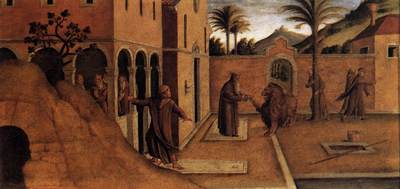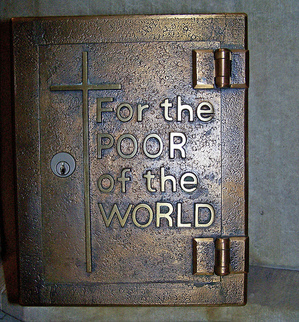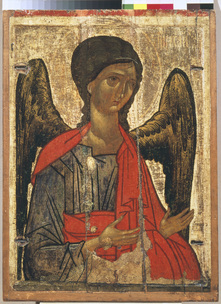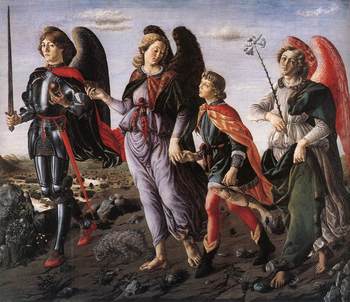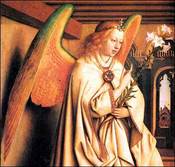 O God, Who in Thine ineffable providence hast deigned to send Thy holy Angels to watch over us, grant Thy suppliants always to find safety in their protection and in eternity to share their happiness.
O God, Who in Thine ineffable providence hast deigned to send Thy holy Angels to watch over us, grant Thy suppliants always to find safety in their protection and in eternity to share their happiness.
Today we honor the guardian angels and the Church has had this feast on the universal calendar since 1670 as a way of proclaiming God’s protection for all of us, believer and non-believer alike; the guardian angels are not given only to helpless humanity. Today’s memorial also reminds us that there is a spirit world and that there are beings without bodies in our midst, who are of good and evil.
In your prayers today, kindly remember the monks of the American-Cassinese Congregation who are under the patronage of the Guardian Angels. Pray for vocations to the monastic way of life and holiness of life.
This feast may be confusing to some people so I thought presenting some of the Church’s teaching on angels would be good.
The Angels in Relation to God
Holy Writ adjures the angels to praise God and attests that they glorify God by their praise. (Cf. Ps 102, 148, Dn 3:58, Is 6:3, Rev 4:8, Heb 1:6)
The Angels in Relation to Man
De fide
Since the 16th century the Church celebrates a feast of in honor of the guardian angels. The Roman Catechism (IV.9.4) teaches: “By God’s Providence the task is given of protecting the human race and individual human beings, so that they may not suffer any serious harm whatever.”
Holy Writ testifies that all the angels are in the service of mankind. Hebrews 1:14: “Are they not all ministering angels, sent to minister for them who shall receive the inheritance of salvation?” Psalm 90:11ff describes the care of the angels for the just.
According to Origen (De princ. I Praed. 10) it is “a constituent part of the doctrinal promulgation of the Church that there are angels of God and benevolent powers, which serve Him, in order to complete the salvation of mankind.” (Cf. Origen, contra Celsum, VIII 34.)
Sent. certa.
 According to the general teaching of the theologians, however, not only every baptized person, but every human being, including unbelievers, has his own special guardian angel from his birth. This view is biblically founded on the words of Our Lord. Matthew 18:10: “See that you do not dispise one of these little ones. For I say to you that their angels in heaven always see the face of my Father who is in heaven.”
According to the general teaching of the theologians, however, not only every baptized person, but every human being, including unbelievers, has his own special guardian angel from his birth. This view is biblically founded on the words of Our Lord. Matthew 18:10: “See that you do not dispise one of these little ones. For I say to you that their angels in heaven always see the face of my Father who is in heaven.”
St. Basil with reference to Matthew 18, teaches: “Every one of the faithful has an angel standing at his side as educator and guide, directing his life” (Adv. Eumonium III.1) According to the testimony of St. Gregory the Wonder-worker and of St. Jerome, every person has from his birth his own special guardian angel. St. Jerome comments on Matthew 18:10: “How great is the value of the (human) soul that every single person has from birth (ab ortu navitatis) received an angel for his protection” (cf. St Gregory the Wonder-worker’s thanksgiving speech on Origen. C.4.S.th.I.113, 1-8).
The Veneration of Angels
The veneration by men of the good angels is justified both by their glorification by God and their relation to men. That which the Council of Trent teaches as to the invocation and veneration of the saints (D 984ff), may also be applied to the angels. The rejection of the veneration of the angels by St. Paul (Col. 2:18) refers to a false, exaggerated veneration of Gnostic false teachers. St. Justin Martyr is an early witness to the Church’s veneration of the angels. (L. Ott, Fundamentals of Catholic Dogma, 1960)
When I was a little boy my grandmothers taught me this prayer by saying it with me every night before bed when I spent the night at their homes. It brought me comfort then, and it brings me confort today. Each time I pray the prayer I am reminded of my grandmothers. Teach your children this prayer and say it yourself.
Angel of God,
my guardian dear,
to Whom His love,
commits me here,
ever this day,
be at my side,
to light and guard,
to rule and guide. Amen.
Finally, there are some in the Church who undoubtedly will be singing this hymn for a communion meditation. Enjoy!!!

